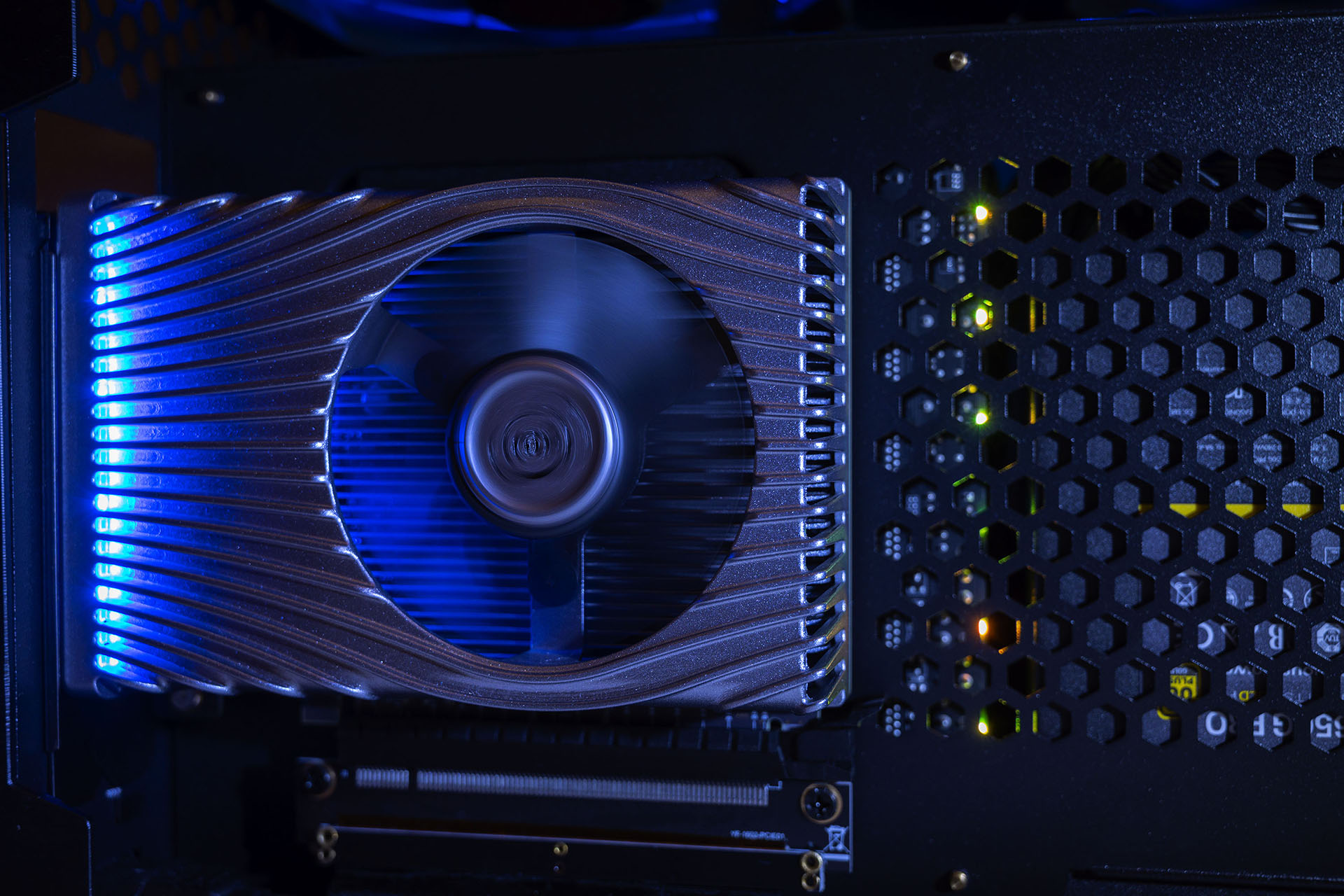Intel’s Xe DG2 graphics to get 512 EUs and AMD-rivalling shader power
Latest Intel driver dump details two new SKUs...

Intel’s upcoming DG2 high-performance desktop graphics card will pack up to 512 execution units and rival AMD’s latest RDNA 2 GPUs for raw graphics processing power. That’s the exciting, if not fully confirmed, implication of device ID entries included in Intel’s latest graphics driver dump.
Previous rumours regarding Intel’s new GPU have indicated a more modest 128 to 384 EU count. But as spotted by Videocardz.com, Intel’s latest 100.9126 GPU driver has device ID entries indicating two variants of the new DG2 card, the high-performance take on Intel’s latest Xe graphics architecture.
The two entries read ‘DG2 128 SKU’ and ‘DG2 512 SKU’ respectively, unambiguously implying 128 EU and 512 EU variants of the new GPU. If accurate, the 512 EU variant should deliver raw graphics shader power in roughly the same ballpark as AMD’s latest Radeon RX 6000 series GPUs, if some way behind Nvidia’s Ampere chips.
Intel’s Xe architecture is already a known quantity in the form of DG1, a discrete GPU designed for thin-and-light notebooks. It’s also the basis of the integrated graphics in Intel’s Tiger Lake CPUs.
DG1 offers 96 execution units running at 1,650MHz and fits within a 25 watt TDP, all of which is enabled by Intel’s 10nm production node. DG1 is claimed to be good for around 2.5 TFLOPs of raw FP32 compute power. That provides a clear reference point for a 512 EU variant of DG2.

Best CPU for gaming: the top chips from Intel and AMD
Best graphics card: your perfect pixel-pusher awaits
Best SSD for gaming: get into the game ahead of the rest
Intel has already said DG2 will be produced on a third party production node, thought to be TSMC’s 7nm or 6nm node. Given DG1 is aimed at power and heat constrained notebooks, it’s reasonable to assume significantly higher clocks for the desktop DG2 board.
Factor in 512 EUs and higher clocks and DG2 looks like it should offer raw graphics processing power to rival AMD’s latest Navi chips. Assume 30 percent higher clocks than DG1 and you get a DG2 board with 17TFLOPs. Bump that to 50 percent higher clocks and DG2 would be good for around 20TFLOPs. That just happens to be bob-on AMD’s claims for the Radeon RX 6900 XT.
The biggest gaming news, reviews and hardware deals
Keep up to date with the most important stories and the best deals, as picked by the PC Gamer team.
Of course, raw shader power is far from a clear guide to actual gaming performance. After all, Nvidia says the GeForce RTX 3090 is capable of over 35TFLOPs of FP32 throughput, which implies an entirely unrealistic performance advantage over AMD’s best GPU. There’s far more to actual in-game frame rates than pure processing power as measured in TFLOPs.
However, the fact that Intel’s DG2 looks to be in roughly the right ballpark for raw shader power is certainly promising. This latest information is also in line with previous rumours indicating DG2 could offer performance roughly in line with Nvidia's RTX 3070 boards. With the supply of both AMD and Nvidia’s new GPUs painfully tight and pricing increasingly spiralling out of control, a third entrant into the market can only be a good thing.
In short, Intel’s Xe graphics needn’t be the absolute fastest thing out there to have a very positive impact on the market generally. More options and lower prices would be very welcome indeed.

Jeremy has been writing about technology and PCs since the 90nm Netburst era (Google it!) and enjoys nothing more than a serious dissertation on the finer points of monitor input lag and overshoot followed by a forensic examination of advanced lithography. Or maybe he just likes machines that go “ping!” He also has a thing for tennis and cars.

